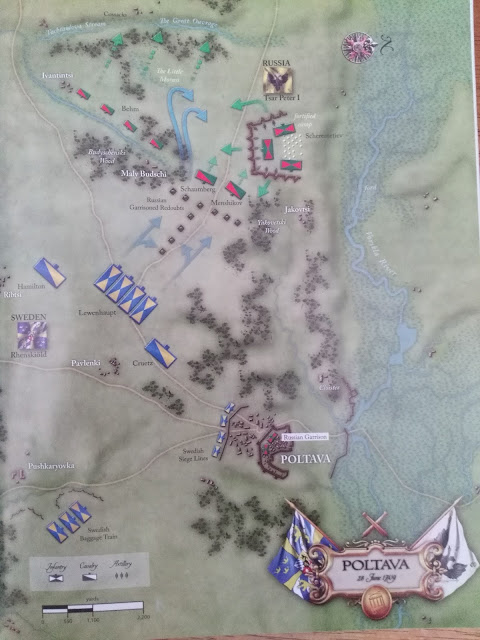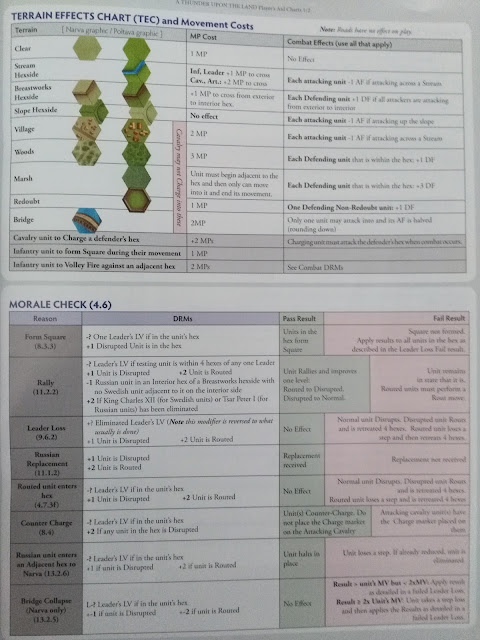BARBARIANS: THE INVASION
from
In fact, the whole physical creation of this game impacts immensely to the benefit of this product in so many ways, but for one feature and that is directly linked to my reference to Conan the Barbarian. The card art and wonderful array of miniatures strongly echoes the graphics so familiar both in the many books of Conan's adventures and even more so the films of Arnold Swarzenegger. Bulging muscled warriors and berserkers and scantily clad female warriors and goddesses.
It is the latter that has drawn disapproval from some gamers and may influence ultimately your own choice of this game. In total we're talking almost exclusively about seven cards out of a vast array and several miniatures in each players set of figures. Sensibilities may have changed in recent years, but nothing here seems out of line with images from computer games/comic book heroes and the current appetite for their T.V and cinematic interpretations .
What is unquestionable is that in total this is an awesome product and project. Admittedly I have been fortunate to receive the Iron level Kickstarter package to review. From the start I had followed the progress of this game and been amazed by what I'd seen and read. For many months, both the games I've received for review and those I've bought myself reflect the quality of modern production and each seemed to lift the bar ever higher. Barbarians: The Invasion has certainly pushed that bar up several more notches.
On lifting up the lid, I was bowled over - another cornucopia, as item after item was lifted from the box! How did so much get crammed in here and you'll certainly find it's not easy to packing it all back. For a start, I've abandoned the insert.
Nor are the rules as complex as at first they may seem to be. The core is the Action Phase when each player in turn places one of his three "workers" - Barbarian Champions - to gain resources, buy cards and, of course, go to war. The first Phase, Maintenance, couldn't be simpler, simply collect the requisite resources from as many building cards as you have the ability to use. The final, appropriately named, End Phase is equally straightforward as you choose those benefits/avoid penalties that you can afford to pay for.
The rule book itself I found clear and well organised with the mechanics easy to understand, but initially there have been some uncertainties and contradictory interpretations. Largely, this was because of the strong dependence on a profusion of symbols both on the game board and on the cards. Intended to help language independence, they would have benefited immensely from a fuller play aid than the back of the rule book provides.
Mastering and remembering the many symbols needed to understand the actions, along with the interplay between the various boards and tracks may seem daunting on an initial explanation. Frankly, after a couple of plays I found that this all falls into place and becomes easy to remember.
What remains slightly more difficult is the use of colour in the production. It certainly adds to the dark image of a mythic barbarian world, but it can make it a strain being able to see clearly the multitude of icons on the volcano that tell you what action you have chosen. This is not a game to be played in poor lighting! By contrast the alternate side to the rings on the volcano which is used with the Hunt Expansion is much more readable.
Equally, the similarity in colour between the backs of the various terrain cards has caused problems. I hasten to add that none of these are insurmountable issues: printing a simple play mat for the terrain cards with the location and colour printed on needed just a few minutes spent on the computer and I've found that, after a few plays, recognising the icons on the volcano becomes much easier.
Leading the many substantial qualities of the package is first and foremost the volcano which is at the heart of the game and the focus for your Actions. Placing your first Champions on the topmost ring and then descending step by step with each subsequent Champion is quite unlike any other game I've experienced.
Do not be deceived by anyone who claims that a set of little wooden meeples and cubes of wood for marking your resources is all that's needed. I say that as a gamer who is largely indifferent to bling and what in so many games is often a tacked-on theme. In Barbarians: The Invasion the theme is reinforced by every aspect of the game and the sight of the barbarian miniatures as they start to throng the volcano is part of the strong visual pleasure and experience. Even more so when you've invested some time in painting the miniatures, as subsequent pictures, like the next one, will reveal.
Game play is engrossing with the interaction of so many branching elements. Everything begins with the all important choice of actions on the volcano. These may lead directly to gaining the resources with which you can buy troops when taking the War Action on the map of Fenian or pay for the Warchief and God cards that supplement and aid various aspects of the game.
Other actions help your personal markers advance on one of eight tracks [four Barbarian Tactics tracks and four Barbarian Knowledge tracks ]. The former reduce the number of battles you have to fight when trying to conquer one of the regions on the map and the latter support a range of benefits including your resource collecting, defence against the penalties of a lost battle, the ability to use from 1 to 4 buildings and how far out into the island worlds of Fenian you can voyage.
However, I'm sure that for many it is the fighting of battles that stands out and here this game has come up with a set of highly original concepts. First of all, you will be trying to conquer territory in the islands that make up the realm of Fenian. At the beginning of the game, each region will have a random counter placed face-down and then all are revealed showing the colour of one of the four clans and its Domination value [i.e. VP value].
Already I hope you can see the originality of ideas and there are more to come. Each type of terrain card shows which of three types of warrior [archer/berserker/raider] you will have to fight and also which of the three types is most likely to be encountered. Before you reveal any of the cards, you have the opportunity to spend combinations of resources to buy troops for the battle.
Once you've purchased the troops you want, each battle card is turned over one at a time and you decide whether to spend the troops needed to defeat each individual turn of the card. As you can imagine there is a whole little meta-game involved here.
Do you take the war action early and face many battles in order to grab high point scoring tokens, but face draining loss of troops and the additional consequences of losing some battles or do you spend actions in the early part of the game to advance your Tactics tokens so that you face fewer battles later in the game. Do you gamble on buying fewer troops to conserve resources for the many other purposes that they can be used for? You also need to think about advancing the Knowledge track that allows you to attack more distant islands or the Defence track that helps you avoid the penalty of losing a battle.
These are just some of the pressures, choices and decisions you face when contemplating the War Action. At the same time, you have plenty of other decisions crowding in on you. The need to be buying among other things building cards that will give you extra resources in the Maintenance Phase and provide end game bonuses or Warchief and God cards that also give a variety of aids and additional abilities. Regarding the God cards, there have been some criticisms of their powers being unbalanced and the fact that one is randomly given to each player at game set-up has drawn comments about the detrimental effects on the game. All I can say is that from a series of 2, 3 and 4 player sessions, none of the players has felt there was any evidence of this problem and, as has been pointed out by other reviewers, a simple house-rule modifying their play or distribution at the start can easily be instituted.
Though conquest and the end game bonuses on the building cards provide the main source of those game winning Domination points, there are many other sources for small incremental gains throughout the game. These latter should not be overlooked or considered insignificant. This is a game that rewards attention to the diversity of options and another reason why I rate it so highly.
And don't forget that if you want even more options, you can turn to the Hunt Expansion with new figures and cards or the other two Fenian map boards, whose configuration changes the avenues of conquest.
All in all, Barbarians: The Invasion provides a multi-layered experience - starting with the variety of combinations and interactions of the effects of placing the players' pieces on the volcano and the ability to rotate levels of the volcano. This is deepened by the interplay of using the many cards that can be bought and then crowned by the fascinating mechanics of the War Action.
It is a game that plays equally well with two, three and four players - a rare factor in many games. Though I like to get in the full complement of players if possible, every two-player confrontation has been a real duel! And finally, you can enjoy an equally riveting solo play.
Personally, this is a game that has had and will continue to get many plays. At conventions where I've introduced it, merely setting it up has drawn eager players and claimed the attention of a steady stream of passers keen to know more. Another "keeper" in my collection and to entice you I'll end with just a few more pictures of the painted miniatures. Good slaying!
Many thanks to Tabula Games, the indie games design studio, for the review copy. This is a name to look out for.


































Follow Us